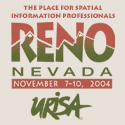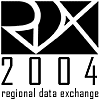

|
|
| ||
Taking On Atlas GIS: An Interview with RPMAdena Schutzberg
Last week Retail Profit Management (RPM) announced that they’d signed an agreement with ESRI to take over sales and support of Atlas GIS 4.0 and port its look and feel to the ArcView 8.1 platform. I interviewed senior partners Steve Lackow and Elio Spinello of RPM about their plans. Q: Why did RPM take on the sales and marketing of Atlas GIS? A: RPM has always been involved in the sales and marketing of Atlas. We’ve been using Atlas products since Atlas Graphics was released in the 1980s and Steve Poizner, SMI’s founder, answered the phone himself in technical support. And we’ve been VARs and developers for 10 years, spanning the SMI and ESRI eras. It’s always been the easiest product to teach and support, and that is important to our customers, primarily in business, social sciences and health care. Now, we’re essentially trying to address several audiences. There are unmet needs for service, support and extension among the legacy Atlas users who have had no compelling reason to “upgrade” or change. There is another group of Atlas users who would like to take advantage of the capabilities of the broader ArcView platform, but the low level nature of ArcView 3.x has resulted in missing functionality, making this feel like a downgrade for many Atlas users. Now, with ArcView 8.1 we can easily address those issues – adding both the functionality and the look-and-feel of Atlas. We also think this platform and an Atlas extension of it will be attractive to users of other mapping and GIS systems. Q: Will Atlas users be interested in an ArcView 8.x extension? Or is this extension equally aimed at ArcView users? I recall only a small fraction of Atlas users moving to ArcView when ESRI extended an offer soon after the acquisition. A: Atlas users have stayed with Atlas, even though to this day and at least through the end of the year, they can still upgrade to ArcView 3.2 or 8.1 at the same prices as ArcView users can. They simply have not had a compelling reason to upgrade. Now, in implementing the function and feel of Atlas on the ArcView 8.1 platform, we think we are providing that compelling reason, or at least making it possible for Atlas users to consider the switch. They couldn’t do so before, because ArcView 3.2 couldn’t meet their needs. If they still want to stay with Atlas 4, that’s OK too. We’ll support them. As for ArcView users, the Atlas extension will make it a lot easier to do everyday business tasks, for example assigning data by location to a customer database or aggregating point data to regions. We also think that it will be of value to users of other GIS systems, who can utilize the Atlas functionality and be more productive with the interface. We believe that many users of other systems are looking for ways to migrate to ESRI technology anyway, since it looks like the best bet for the future. Q: Do I understand correctly that Atlas 4.0 will be the last version of Atlas built on its "original" code base? If not, what, if anything, can you say about the arrangements with ESRI? I'm curious only because in another case of a GIS being taken on after its "prime" by a third party - I'm thinking of GDS - there were issues when those taking over could not have access to the source code to truly upgrade the product. . A: Yes, Atlas 4.0 is the end of the line for releases on that platform. We may introduce maintenance releases and updates, particularly to the geocoder and the ZIP centroid file, and the data bundles. But it just doesn’t make any more sense to us than it did to ESRI to undertake a duplicitous effort to make Atlas contemporary - for example, to add raster or map server capabilities or to swap out the flat-file database for a relational one - when we have the benefit of ArcGIS technology to leverage. Q: I’m afraid I have to admit that I’m one of the people who felt that “business geographics,” a market that Atlas addressed, never really exploded. How do you view that niche market of GIS? A: From a desktop perspective, GIS is going to be increasingly “wizardized” so that one need not be a database or graphics expert, let alone a GIS expert, to use the technology productively. That is where ESRI is going with the Business Analyst, and where Atlas is going at version 8.1. The desktop GIS products – all of them, including Atlas – have been too difficult to learn and to use straight out of the box. We promoted Atlas for a long time as the “GIS for business when your business is business, not GIS.” But truth be known, even Atlas hasn’t been easy enough and suffers from the same kind of GIS-centricity as the other desktop products. That is why GIS on the Internet and embedded GIS have been such strong trends over the past 3 or 4 years. Mapquest alone has exposed more people to digital mapping possibilities and capabilities at a profoundly faster rate than we could ever have imagined just a few years ago. We are now trying to include GIS as part of basic IT infrastructure, so much so that users are taking advantage of spatial function without even knowing they are, because the technology is built-in to their core info systems. A good example of this is the ability to select customers who live within 5 minutes of a store or a hospital without ever looking at a map. Finally, through products like Mapquest, consumers have become more knowledgeable with respect to the basic application and concepts related to GIS. Q: Any thoughts that other GIS products in their mature years may resurface as ArcView 8.x extensions? A: We have our hands full with 3.2 extensions and scripts that want to be 8.1! Actually, I am wondering about what is going to happen with MapInfo. I’ve long felt a kinship with many of the MapInfo users because they work more with similar business and social science applications as we do, and have a terrific mailing list that is managed by Bill Thoen who goes out of his way to be of service to the users. I think the folks at MapInfo also think that “business geographics” is a mature if not saturated market, and that this extends towards their entire attitude towards the desktop. They seem to be focusing on Internet and embedded GIS opportunities. It would not surprise me at all if someone disenchanted with MapInfo and Map Basic came along and wrote a MapInfo for ArcView in VBA. With ArcGIS, everything is there to build your own product. Don’t like ArcView? Fine, roll your own interface and application, here are the objects, the properties, the methods. Want a three-tiered application and not a desktop one? Fine, we’ll deliver it as application service over the Geography Network using ArcIMS - which, by the way, we may very well do with Atlas 8.1 at some point. Q: Why do you think Atlas has survived as long as it has? A: That’s an easy one. Atlas GIS for Windows, 3.x and 4, is the best GIS program ever. It might not be easy as pie, but right out of the box it can do so much more than ArcView or MapInfo or anything else. Its primary strength has been a highly intuitive interface in which functions to support commonly performed tasks are centralized and easy to access. And, with a little user self-help and some ESRI training, and a VARs push in the right direction, there’s a lot of room to learn and grow into the application. Q: If you had run Atlas development/marketing at SMI or ESRI, what might you have done differently to expand Atlas' market share? A: With the benefit of hindsight, there is quite a bit we’d do differently. But acting on what was known at the time, I’m not sure. At ESRI, the big mistake was not fully leveraging how entrenched Atlas is among its users and how loyal they are. You also have to keep in mind that at ESRI, and at RPM for that matter, making money is not our primary objective. We are private, closely held companies with Big Goals. As Bernstein tells the reporter in Citizen Kane, making money is not hard to do if that is all that you want to do. But we have a much greater vision for the technology, a vision that extends to enhancing mutual understanding among people all around the world, and to providing an information platform that will support better management and conservation of the world’s precious resources.
| ||


